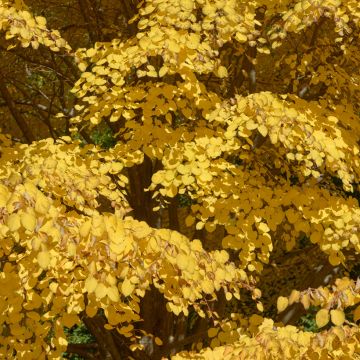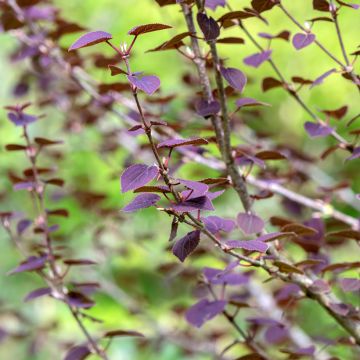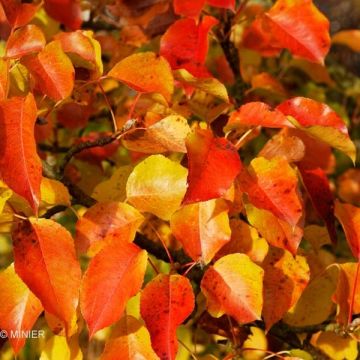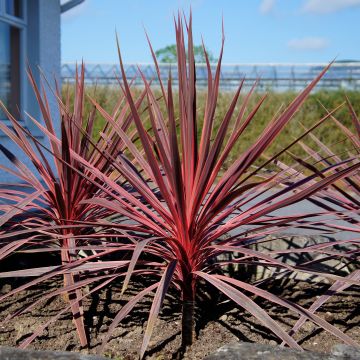

Cercidiphyllum japonicum Pendulum


Cercidiphyllum japonicum Pendulum
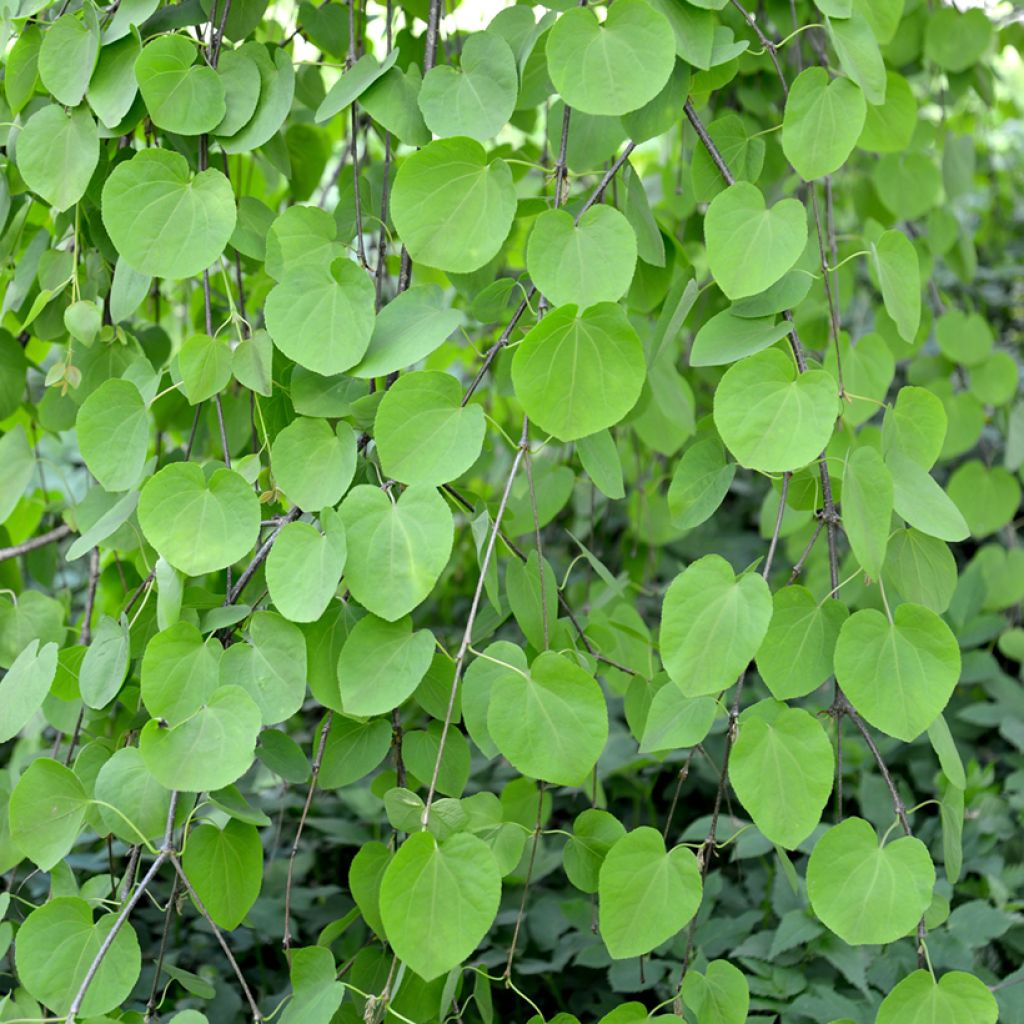

Cercidiphyllum japonicum Pendulum


Cercidiphyllum japonicum Pendulum


Cercidiphyllum japonicum Pendulum
Cercidiphyllum japonicum Pendulum
Cercidiphyllum japonicum Pendulum
Katsura tree, Japanese Judas tree
Why not try an alternative variety in stock?
View all →This plant carries a 24 months recovery warranty
More information
We guarantee the quality of our plants for a full growing cycle, and will replace at our expense any plant that fails to recover under normal climatic and planting conditions.
Oversize package: home delivery by special carrier from €6.90 per order..
Express home delivery from €8.90.
Oversize package: home delivery by special carrier from €6.90 per order..
Express home delivery from €8.90.

Does this plant fit my garden?
Set up your Plantfit profile →
Description
Cercidiphyllum japonicum 'Pendulum', also known as the Weeping Katsura Tree and the Candy Floss Tree, brings a romantic touch to the garden with its spread-out and generously drooping habit. Its tender green foliage changes colour throughout the seasons and adorns itself with shimmering hues in autumn. It is during leaf fall that the caramel tree exhales a delicious burnt sugar scent and perfumes its surroundings with its sweet and delightful notes.
Cercidiphyllums have their own family called Cercidiphyllaceae, which includes only one species, Cercidiphyllum japonicum. They are closely related to magnolias. These deciduous trees are native to Japan and China, and are characterised by a narrow fork-shaped trunk, horizontally spreading branches, and cordate leaves. In our gardens, Cercidiphyllum japonicum forms a tree with an elegant appearance, reaching only 12 m (39.4 ft) in height, while in its native habitat it is the tallest deciduous tree, reaching up to 40 m (131.2 ft).
Cercidiphyllum japonicum 'Pendulum' is a smaller version of the Katsura Tree, rarely exceeding 6 m (19.7 ft) in height and 5 m (16.4 ft) in spread. Its uniqueness also lies in its weeping and spread-out habit. This tree has a wide domed crown, often carried by several trunks with grey-brown bark that becomes plicate with age. Its branches are so drooping that the tree trunk is usually hidden by the foliage. The interest of the 'Pendulum' Katsura Tree comes from its cascading habit, but also emanates from its vivid and ever-changing foliage, constantly evolving throughout the seasons. In spring, it is adorned with rounded leaves with slightly undulate edges, measuring 5 cm to 8 cm (2 in to 3.1 in) in length. They are bronze-coloured when they first emerge, then turn tender green in summer, and finally offer the gardener a visual and olfactory delight in autumn. In the autumn months, the leaves blaze with hues ranging from yellow to purple, sometimes even mauve, and exude delicious scents of caramel or toffee. In late winter, 'Pendulum' bears insignificant dull red flowers. This flowering is followed by fruiting only on female plants, as the Katsura Tree is dioecious. These are small green-brown pods that contain winged seeds.
The Katsura Tree grows in wooded areas and along watercourses, preferring cool, slightly acidic soils where its growth is faster and its autumn colours more vibrant. Plant it in light, humus-rich, deeply loosened, and well-drained soil, in a location sheltered from cold and drying winds. In hot regions, plant it in shade to prevent premature leaf drop. Ideally placed near a water feature, it appreciates regular watering during the growing season. A thick mulch will help maintain a cool soil in summer and protect the roots from cold in winter, although it can withstand temperatures below -15° C (5° F). Pruning Cercidiphyllum japonicum 'Pendulum' is not mandatory. However, you can remove dead or diseased branches at the end of winter to maintain a balanced habit. Easy to grow, it has good disease resistance and will reveal its splendour without great difficulties! Planted as a specimen in the middle of a lawn, the 'Pendulum' Katsura Tree will enliven any style of garden and bring a romantic touch to its surroundings. This caramel tree works well as a background plant or within a country hedge, illuminating it with its flamboyant colours and unique weeping habit. Paired with Japanese Maple, Black Gum, or Golden Catalpa, it will showcase its beauty in a symphony of colours.
Report an error about the product description
Cercidiphyllum japonicum Pendulum in pictures


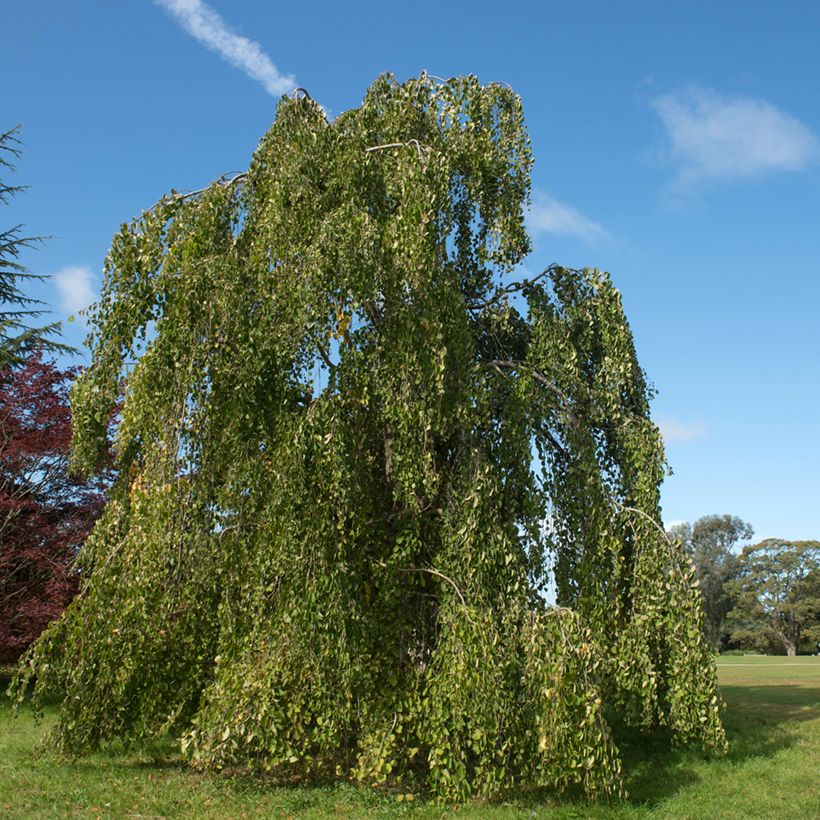

Plant habit
Flowering
Foliage
Botanical data
Cercidiphyllum
japonicum
Pendulum
Cercidiphyllaceae
Katsura tree, Japanese Judas tree
Cultivar or hybrid
Other Cercidiphyllum
Planting and care
Cercidiphyllum Japonicum 'Pendulum' prefers fresh and well-drained soils. Slightly acidic soil will accelerate its growth and enhance the vibrancy of its autumn colours. In hot regions, it is important to choose a shaded location for it, otherwise its leaves may fall prematurely. Its placement should be carefully considered to avoid transplantation, as it is not well-tolerated.
Very hardy, it can withstand temperatures below -15° C (5° F). However, mulching will help retain soil moisture in summer and protect the roots from the cold in winter. During the growing season, the caramel tree requires regular watering if not planted in a moist soil. This plant is resistant to diseases.
Planting period
Intended location
Care
-
, onOrder confirmed
Reply from on Promesse de fleurs
Striking foliage shrubs
Haven't found what you were looking for?
Hardiness is the lowest winter temperature a plant can endure without suffering serious damage or even dying. However, hardiness is affected by location (a sheltered area, such as a patio), protection (winter cover) and soil type (hardiness is improved by well-drained soil).

Photo Sharing Terms & Conditions
In order to encourage gardeners to interact and share their experiences, Promesse de fleurs offers various media enabling content to be uploaded onto its Site - in particular via the ‘Photo sharing’ module.
The User agrees to refrain from:
- Posting any content that is illegal, prejudicial, insulting, racist, inciteful to hatred, revisionist, contrary to public decency, that infringes on privacy or on the privacy rights of third parties, in particular the publicity rights of persons and goods, intellectual property rights, or the right to privacy.
- Submitting content on behalf of a third party;
- Impersonate the identity of a third party and/or publish any personal information about a third party;
In general, the User undertakes to refrain from any unethical behaviour.
All Content (in particular text, comments, files, images, photos, videos, creative works, etc.), which may be subject to property or intellectual property rights, image or other private rights, shall remain the property of the User, subject to the limited rights granted by the terms of the licence granted by Promesse de fleurs as stated below. Users are at liberty to publish or not to publish such Content on the Site, notably via the ‘Photo Sharing’ facility, and accept that this Content shall be made public and freely accessible, notably on the Internet.
Users further acknowledge, undertake to have ,and guarantee that they hold all necessary rights and permissions to publish such material on the Site, in particular with regard to the legislation in force pertaining to any privacy, property, intellectual property, image, or contractual rights, or rights of any other nature. By publishing such Content on the Site, Users acknowledge accepting full liability as publishers of the Content within the meaning of the law, and grant Promesse de fleurs, free of charge, an inclusive, worldwide licence for the said Content for the entire duration of its publication, including all reproduction, representation, up/downloading, displaying, performing, transmission, and storage rights.
Users also grant permission for their name to be linked to the Content and accept that this link may not always be made available.
By engaging in posting material, Users consent to their Content becoming automatically accessible on the Internet, in particular on other sites and/or blogs and/or web pages of the Promesse de fleurs site, including in particular social pages and the Promesse de fleurs catalogue.
Users may secure the removal of entrusted content free of charge by issuing a simple request via our contact form.
The flowering period indicated on our website applies to countries and regions located in USDA zone 8 (France, the United Kingdom, Ireland, the Netherlands, etc.)
It will vary according to where you live:
- In zones 9 to 10 (Italy, Spain, Greece, etc.), flowering will occur about 2 to 4 weeks earlier.
- In zones 6 to 7 (Germany, Poland, Slovenia, and lower mountainous regions), flowering will be delayed by 2 to 3 weeks.
- In zone 5 (Central Europe, Scandinavia), blooming will be delayed by 3 to 5 weeks.
In temperate climates, pruning of spring-flowering shrubs (forsythia, spireas, etc.) should be done just after flowering.
Pruning of summer-flowering shrubs (Indian Lilac, Perovskia, etc.) can be done in winter or spring.
In cold regions as well as with frost-sensitive plants, avoid pruning too early when severe frosts may still occur.
The planting period indicated on our website applies to countries and regions located in USDA zone 8 (France, United Kingdom, Ireland, Netherlands).
It will vary according to where you live:
- In Mediterranean zones (Marseille, Madrid, Milan, etc.), autumn and winter are the best planting periods.
- In continental zones (Strasbourg, Munich, Vienna, etc.), delay planting by 2 to 3 weeks in spring and bring it forward by 2 to 4 weeks in autumn.
- In mountainous regions (the Alps, Pyrenees, Carpathians, etc.), it is best to plant in late spring (May-June) or late summer (August-September).
The harvesting period indicated on our website applies to countries and regions in USDA zone 8 (France, England, Ireland, the Netherlands).
In colder areas (Scandinavia, Poland, Austria...) fruit and vegetable harvests are likely to be delayed by 3-4 weeks.
In warmer areas (Italy, Spain, Greece, etc.), harvesting will probably take place earlier, depending on weather conditions.
The sowing periods indicated on our website apply to countries and regions within USDA Zone 8 (France, UK, Ireland, Netherlands).
In colder areas (Scandinavia, Poland, Austria...), delay any outdoor sowing by 3-4 weeks, or sow under glass.
In warmer climes (Italy, Spain, Greece, etc.), bring outdoor sowing forward by a few weeks.

































